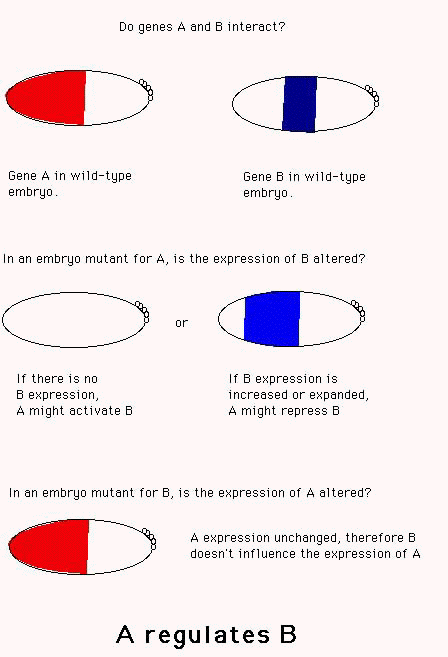BIOL 114 Test 4
December 11, 2006
Name __________________________________
Total Points: 50
|
Note: These responses are a "skeleton key;" the bare minimum of what's needed for an answer. Typical student answers would take a few more sentences. Excessive length, however (more than the box provided) does not help.
1. (8 pts) Explain how the reproductive cycle of Caulobacter crescentus serves as a model system for study of differentiation. What molecular mechanism controls the cycle; and how is this related to a molecular process in human development? 2.
(8 pts) Explain three fundamental differences between
development in plants and animals. * Plant cells do not migrate, as do bacteria or animal cells. Plant shape forms based on the rate of cell division and the direction of elongation. Although plants develop three basic tissue systems (dermal, ground, and vascular), they don't rely on gastrulation to establish this layered system of tissues. * Plant development is continuous. New plant organs are formed throughout their life by clusters of embryonic cells called meristem. * Plants have tremendous developmental
plasticity. Lost plant parts can be regenerated by meristems, and even
entire plants can be regenerated from single cells. In addition, environmental
factors such as light and temperature can greatly influence overall
plant form. 3.
(8 pts) In Drosophila,
you find two genes encoding transcription factors (genes A and B) expressed
early in development. Explain
an experiment to determine whether gene product A regulates expression
of gene B, or vice versa.
4. (8 pts) Compare and contrast the processes of gastrulation in the sea urchin; the frog; and the chick. Brief diagrams will be helpful, as well as explanation. 5. (8 pts) Explain a developmental process that occurs
in the human and the frog, but not in Drosophila. Explain why not.
Explain what can be learned about expression of the Hoxb genes. From this figure we can see that the higher-numbered Hoxb genes (such as Hoxb9) are expressed in more posterior tissues than the lower-numbered genes (Hoxb1). The order of gene expression in the body plan very roughly approximates the order of genes on the chromosome. This is particuarly evident looking at the most posterior extent of expression of each GFP in panels g, h, i, j.
From other experiments we learn that Hoxb gene expression actually determines when and where the epiblast cells ingress into mesoderm. The second part of Figure 2 shows this with double reporter plasmids, in which a Hoxb gene is overexpressed while GFP is also expressed. Iimura & Pourquie (2006), Collinear activation of Hoxb, Figure 2.
|

